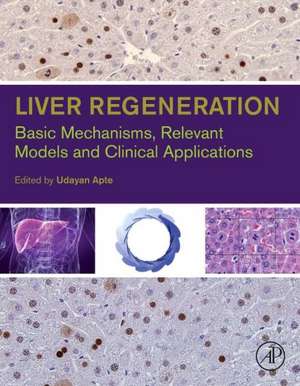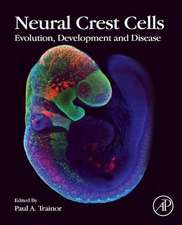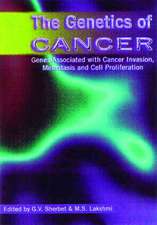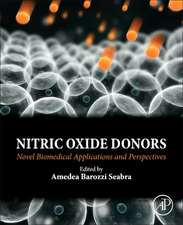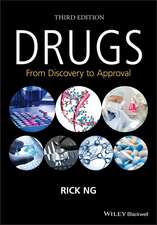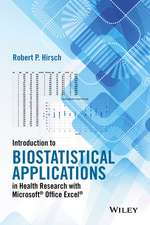Liver Regeneration: Basic Mechanisms, Relevant Models and Clinical Applications
Editat de Udayan M. Apteen Limba Engleză Hardback – 16 aug 2015
By addressing the urgent need for translating basic research findings into clinically relevant modalities and potential therapeutic applications, the book provides the data needed to improve liver patient management.
Hundreds of full-color, graphic photographs and illustrations underline key elements and show researchers and students important aspects of liver transplantation, immunofluorescence, and other techniques used in liver regeneration.
- Summarizes current liver regeneration studies and discussions on expected discoveries
- Provides an overview of standard scientific and cutting-edge technologies to study liver regeneration
- Presents details on the molecular mechanisms that affect liver regeneration
- Highly illustrated, with hundreds of full-color, graphic photographs and illustrations to enhance the learning process
Preț: 691.87 lei
Preț vechi: 903.01 lei
-23% Nou
Puncte Express: 1038
Preț estimativ în valută:
132.40€ • 143.77$ • 111.22£
132.40€ • 143.77$ • 111.22£
Carte tipărită la comandă
Livrare economică 15-29 aprilie
Livrare express 18-22 martie pentru 88.21 lei
Preluare comenzi: 021 569.72.76
Specificații
ISBN-13: 9780124201286
ISBN-10: 0124201288
Pagini: 326
Ilustrații: 200 illustrations (200 in full color)
Dimensiuni: 191 x 235 x 23 mm
Greutate: 0.7 kg
Editura: ELSEVIER SCIENCE
ISBN-10: 0124201288
Pagini: 326
Ilustrații: 200 illustrations (200 in full color)
Dimensiuni: 191 x 235 x 23 mm
Greutate: 0.7 kg
Editura: ELSEVIER SCIENCE
Public țintă
Researchers in the area of liver biologyCuprins
Chapter 1. Introduction to Liver Regeneration: History and General Principles
Chapter 2. Models to Study Liver Regeneration
Chapter 3. Alternative Models to Study Liver Regeneration: Zebrafish
Chapter 4. The Priming and Progression Theory of Liver Regeneration
Chapter 5. Primary and Secondary Mitogen Theory of Liver Regeneration
Chapter 6. Developmental Pathways in Liver Regeneration
Chapter 7. Mechanisms of Termination of Liver Regeneration
Chapter 8. Modulation of Extracellular Matrix During Liver Regeneration
Chapter 9. Role of Chemokines
Chapter 10. Role of Nuclear Receptors
Chapter 11. Role of Developmental Morphogens in Liver Regeneration
Chapter 12. Regulation of Cell Cycle during Liver Regeneration
Chapter 13. Role of microRNAs and Long Non-Coding RNAs in Liver Regeneration
Chapter 14. Changes in Hepatocyte Ploidy during Liver Regeneration
Chapter 15. Role of Endothelial Cells in Liver Regeneration
Chapter 16. Use of Computational Biology, Omics Technologies to Understand Liver Regeneration
Chapter 17. Mitogen Induced Cell Proliferation in the Liver
Chapter 18. Effect of Nutritional Diversity on Liver Regeneration
Chapter 19. Introduction of Hepatic Progenitor Cells
Chapter 20. Cellular Transdifferentiation in the Liver
Chapter 21. Activation of Hepatic Progenitor Cells in Liver Regeneration After Chemical Injury to the Liver
Chapter 22. Hepatic Progenitor Cells and iPS Cells as a Source of Mature Hepatocytes
Chapter 23. Progenitor Cell Transplantation: Experimental Models
Chapter 24. Liver Regeneration as a Therapy for Acute Liver Failure
Chapter 25. Liver Regeneration Following Liver Transplantation
Chapter 26. Hepatocyte Transplantation Therapy
Chapter 27. Liver Regeneration: The Biliary Perspective
Chapter 2. Models to Study Liver Regeneration
Chapter 3. Alternative Models to Study Liver Regeneration: Zebrafish
Chapter 4. The Priming and Progression Theory of Liver Regeneration
Chapter 5. Primary and Secondary Mitogen Theory of Liver Regeneration
Chapter 6. Developmental Pathways in Liver Regeneration
Chapter 7. Mechanisms of Termination of Liver Regeneration
Chapter 8. Modulation of Extracellular Matrix During Liver Regeneration
Chapter 9. Role of Chemokines
Chapter 10. Role of Nuclear Receptors
Chapter 11. Role of Developmental Morphogens in Liver Regeneration
Chapter 12. Regulation of Cell Cycle during Liver Regeneration
Chapter 13. Role of microRNAs and Long Non-Coding RNAs in Liver Regeneration
Chapter 14. Changes in Hepatocyte Ploidy during Liver Regeneration
Chapter 15. Role of Endothelial Cells in Liver Regeneration
Chapter 16. Use of Computational Biology, Omics Technologies to Understand Liver Regeneration
Chapter 17. Mitogen Induced Cell Proliferation in the Liver
Chapter 18. Effect of Nutritional Diversity on Liver Regeneration
Chapter 19. Introduction of Hepatic Progenitor Cells
Chapter 20. Cellular Transdifferentiation in the Liver
Chapter 21. Activation of Hepatic Progenitor Cells in Liver Regeneration After Chemical Injury to the Liver
Chapter 22. Hepatic Progenitor Cells and iPS Cells as a Source of Mature Hepatocytes
Chapter 23. Progenitor Cell Transplantation: Experimental Models
Chapter 24. Liver Regeneration as a Therapy for Acute Liver Failure
Chapter 25. Liver Regeneration Following Liver Transplantation
Chapter 26. Hepatocyte Transplantation Therapy
Chapter 27. Liver Regeneration: The Biliary Perspective
